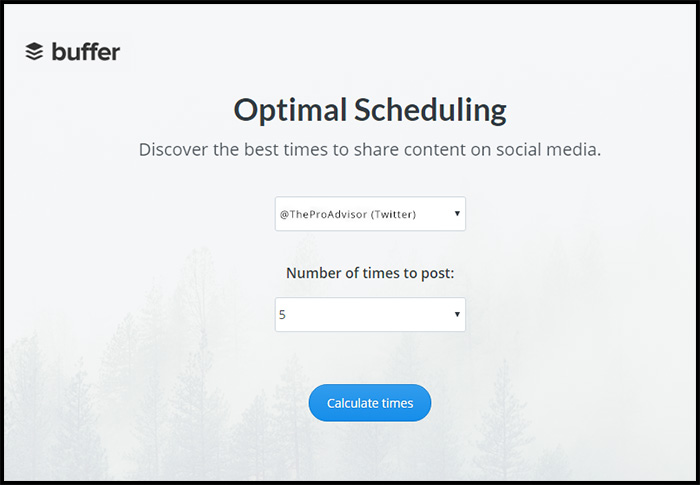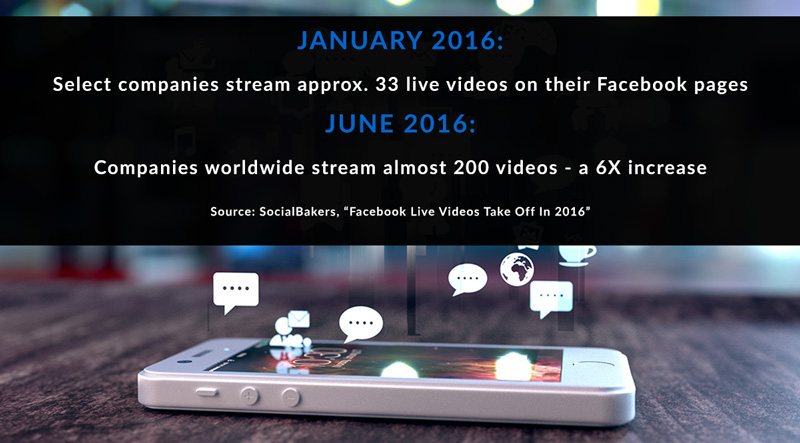
Social media has evolved in the past few years. It’s gone from a digital wilderness to a multi-lane highway full of billboards. For many of us, this change has led to a forest of crickets for each new post. What are our options for maintaining or increasing our social media engagement? Paid advertising is the route many networks want us to take, but we do have other options. Getting more engagement may be as simple as changing how, when, and why you post.
Strategy 1: Optimize Your Posting Times
Your social media posts should be timed to meet your audience’s needs, not yours. While it may be convenient for you to post at 8:30 a.m. on a Monday morning, is that when your clients and prospects are checking Facebook? Is that when they’re ready to think about life insurance?
My guess is probably not.
So when are the best times to post? The answer is different for everyone - because no two audiences are the same. With a bit of testing, you can use these two methods to find your best posting time.
- Use Buffer’s Optimal Timing Tool to see when your followers are most likely to read and react to your posts. Buffer is a social media posting tool. It’s free, and once you connect one or more social media accounts, you can use the link above to analyze your accounts. The tool will give you ideal posting times based on past engagement with your content. You can also use Buffer to create and schedule social media posts using their suggested schedule.

- Test different posting times. Many blogs and brands have studied social media posting times. Their results vary, but overall, changing the days or times that you post can have a big effect on who’s listening. For example, Hubspot compiled research from CoSchedule, QuickSprout, and more that suggests the optimal time to post on Facebook is…drumroll, please…3 - 4 pm on Wednesdays, 1 – 4 pm on Thursdays and Fridays, and 12 – 1 pm on the weekend.

Will that posting schedule work for your audience? Only time will tell. The best way to optimize your posting time is with a lot of testing. If the thought of being tied to your computer on a weekend isn’t appealing, you can always pre-schedule your posts. We explained how to do this in an earlier post here on our blog.
Strategy 2: Ask Better Questions
You probably ask your followers questions in your social media posts. But are they questions designed to get people thinking…and responding?
Let me give you an example.
If I post during Life Insurance Awareness Month and ask my followers who they’d buy life insurance to protect, that’s not going to generate much excitement or interest. The answer is easy – “my wife” or “my kids” or “my family.” The reader may answer the question in his or her mind, but there’s nothing to inspire them to share that post or even leave their answer in a comment.
So how can we inspire them to take the extra step?
Try asking them to make a choice – or asking them to think about themselves in a new way. We’ve all seen this tactic used effectively in click-bait quiz articles with headlines like, “Which Star Wars Character Are You?”
There’s a lot we can learn from this.
For example, you could:
- present a scenario and ask readers how they’d react
- list a few personality types and ask which they’re most like
- post a Mad Lib or a funny photo and ask for life insurance-related captions
- make a pop-culture reference and tie it to life insurance – have you seen any movies or TV shows where the characters mentioned (or could have used) life insurance?
- ask your audience what they want to know about life insurance. Let them direct the conversation!
If you have trouble coming up with creative ideas for posts, start watching others’ feeds more closely. What posts catch your eye? Which ones made you think?
Screenshot or jot down ideas as they hit you, and keep them together. This is your idea bank. When you need a new post idea, pick one out and recreate it using your photos, video, or brand personality.
Strategy #3: Recruit a Pinch Hitter
Your readers are used to hearing from you. They’re familiar with your profile photo and the kinds of things you usually talk about. Over time, that familiarity may lead them to gloss over your posts. But what if they heard from your friends, co-workers, family members, clients, or colleagues instead?
Try reaching out to the people around you and asking them to share their thoughts on life insurance – or, for Throwback Thursday, a memory or photo of you. As an added bonus, your pinch hitter will likely share that content with his or her own network, bringing some fresh eyes to your feed.
Strategy #4: Use Live Video to Answer Questions
If you’re comfortable in front of an audience, why not go live? From Facebook Live to Twitter’s Periscope to Google Hangouts on Air, you can hold live Q&A sessions that showcase your knowledge and personality. Facebook has stated publicly that live videos will get a bump in the News Feed – and that people spend three times longer watching live video than non-live video.

Strategy #5: Get Local
This strategy requires more time and energy than the rest, but can also pay big dividends. Is there a cause you believe in and can help promote? Can you go to a local event and take photos to post? Or interview someone at the event? This is a great way to mix up your content, as well as take advantage of the professional photography and artwork many local organizations and causes have to offer.
Aligning yourself with a cause reflects on your personality, your commitment to your community, and it can also be a good way to generate business and referrals.
Which social media post of yours has gotten the most engagement? What made that post special? Let’s compare notes in the comments.

Still working to establish your social media platform? We can help. Download our free 60-Day Plan for Social Media Success.
Download Now